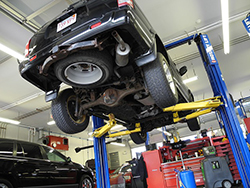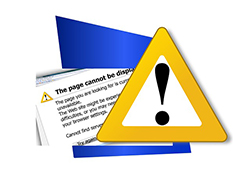 Safety in distribution centers is your top priority at work. After all, going home in one piece at the end of the day is as important as fulfilling orders. You can do your part to ensure safety in distribution centers when you follow these tips.
Safety in distribution centers is your top priority at work. After all, going home in one piece at the end of the day is as important as fulfilling orders. You can do your part to ensure safety in distribution centers when you follow these tips.
Evaluate Each Area
Most distribution centers have potential hazards in dozens of areas. Check each area regularly to remove potential hazards in:
- Housekeeping
- Storage height
- Aisle width
- Fire protection
- Hazardous product storage
Train Everyone
While your company may employ a safety manager, everyone is responsible for safety in distribution centers. Train all employees to spot and remove or report hazards and to follow safety protocols at all times, even before and after work or during breaks.
Obtain Proper Safety Certifications
Everyone who operates equipment or works around hazardous materials must obtain the proper certifications. That training includes safety lessons and protects everyone on the job.
Talk About Safety in Distribution Centers
Prioritize safety conversations as often as possible. Ask your co-workers if they’re having a safe day, encourage them to stay safe and discuss safety numbers as you maintain a safe job site.
Take Charge of Safety in Your Area
You may not be the distribution center’s safety manager, but you are responsible to exercise safety precautions. Be an example of safe practices for everyone else as you protect the entire center.
Cooperate With Safety Drills
Safety drills ensure everyone knows how to react in an emergency. Enthusiastically cooperate with these drills, and encourage your co-workers to participate as you promote safety in distribution centers.
Clean Your Work Station
Keep your work station clean. If you spill something, pick it up so no one slips, and encourage your co-workers to clean their work stations, too.
Maintain Proper Posture
As you perform your duties, maintain proper posture and prevent injuries.
- Use proper lifting techniques.
- Avoid twisting.
- Use an order picker, pulleys, carts and mechanized equipment as necessary.
Protect Visitors
It’s your job to keep your customers, colleagues and visitors safe when they’re on your property. Provide hard hats, ear protection and non-slip shoes if appropriate, and brief delivery drivers and vendors on safety procedures. Chaperone visitors, too, so they stay safe as they navigate your facility.
Confront Unsafe Behavior
When you see a co-worker acting in an unsafe manner, talk to them about it. Make sure they know what they should be doing as you partner together to promote a safe work environment.
Keep Improving
While your distribution center may have earned safety records, there’s always room for improvement. Push your team to continue learning about safety protocols and focusing on safety in distribution centers.
Safety in distribution centers is everyone’s responsibility. Do your part by following these 11 tips.














